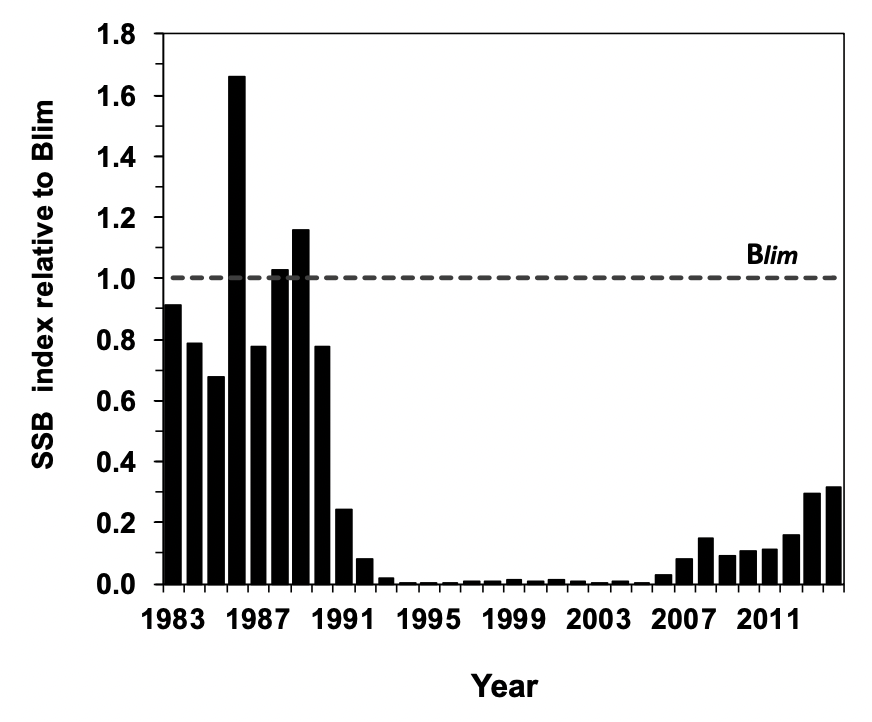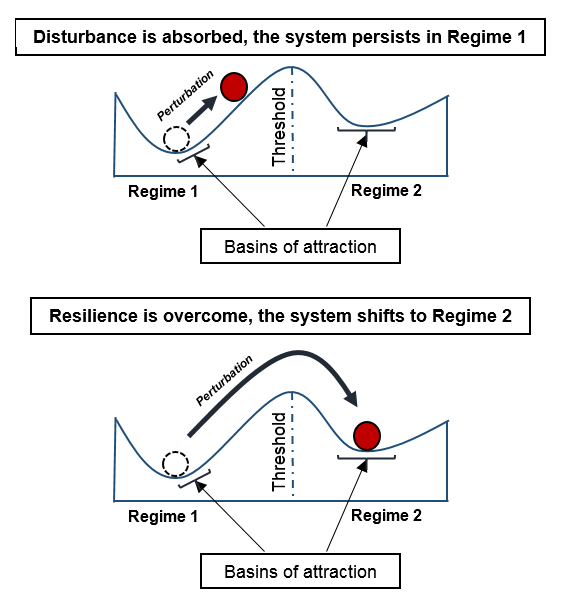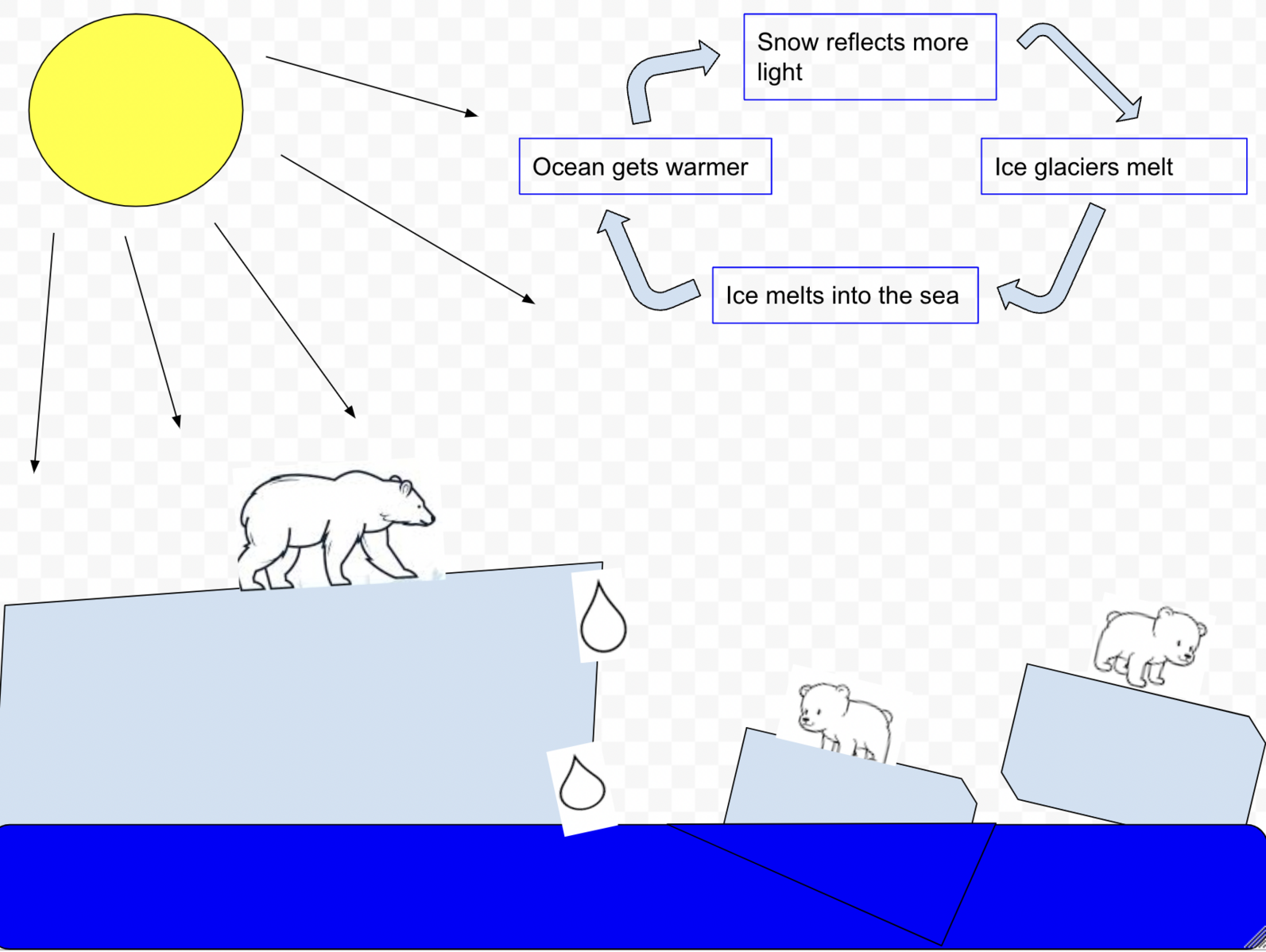IB Syllabus focus:
‘Long-term viability of socio-ecological systems without harming future generations; enhancing resilience generally increases sustainability. Unsustainable use risks ecosystem collapse (e.g., Newfoundland cod).’
Sustainability and resilience are central to understanding environmental systems. They ensure the survival of both ecological and human societies, allowing systems to adapt, recover, and continue functioning across generations.
Sustainability
Sustainability is the ability of socio-ecological systems to maintain their long-term viability without compromising the needs of future generations. It ensures that environmental, social, and economic resources remain available over extended timescales.
Sustainability: The long-term viability of socio-ecological systems without compromising the ability of future generations to meet their needs.
Sustainability involves careful management of natural capital, recognising that overuse of ecological resources leads to degradation and eventual system failure. An example is the collapse of the Newfoundland cod fishery in the early 1990s, which demonstrates how unsustainable practices can cause irreversible ecological and social consequences.

Spawning stock biomass (SSB) index for Northern cod (2J3KL) with a dashed Limit Reference Point (Blim), showing the sharp decline through the late 1980s–1990s and prolonged low levels post-moratorium. This evidences how exceeding regenerative capacity erodes resilience and risks regime shift. The figure includes management reference lines that add context beyond the syllabus basics. Source.
Key Elements of Sustainability
Resource efficiency: Using resources in a way that maintains their regenerative capacity.
Equity between generations: Ensuring today’s actions do not limit tomorrow’s opportunities.
Interdependence of systems: Recognising that human and ecological systems are tightly connected.
System Resilience
Resilience is the capacity of a system to resist, absorb, recover, or adapt to disturbances while maintaining essential functions and structure.
Resilience: The ability of a system to withstand and recover from disturbance, maintaining stability or adapting to change.
Resilient systems are more sustainable because they can buffer shocks such as climate change, pollution, or overexploitation.

Ball-in-cup model showing two basins of attraction separated by a threshold; a small perturbation is absorbed (top), while a larger one crosses the threshold and shifts regime (bottom). This diagram makes explicit how resilience buffers change until a tipping point is exceeded. Source.
A forest with high species diversity, for instance, is more resilient to disease outbreaks than a monoculture plantation.
Features of Resilient Systems
Diversity: Biological, cultural, and economic diversity enhance adaptive capacity.
Redundancy: Multiple components serving similar functions provide backup in case of failure.
Flexibility: Ability to adjust to new conditions.
Connectivity: Interactions among system parts allow for stabilising feedback loops.
The Relationship Between Sustainability and Resilience
Sustainability and resilience are interlinked concepts. Enhancing resilience generally increases sustainability because systems that can resist and adapt to change are less likely to collapse.
When resilience is strong:
Ecosystems recover from disturbances, maintaining long-term productivity.
Societies can adapt to new challenges like climate change.
When resilience is weak:
Small disturbances can trigger major collapses.
Overuse of resources can permanently reduce ecosystem services.
Unsustainable Use and System Collapse
When resource use exceeds a system’s capacity for renewal, collapse becomes likely. This happens when resilience is undermined by human actions such as overfishing, deforestation, or pollution.
Case Example – Newfoundland Cod Collapse
Heavy fishing pressure depleted cod stocks beyond recovery.
Resilience was reduced due to lack of species diversity and continued exploitation.
The ecosystem shifted to a new state dominated by invertebrates, showing how loss of resilience can make collapse irreversible.
Processes that Influence Sustainability and Resilience
Positive Factors
Conservation practices: Protect habitats and species, maintaining diversity.
Sustainable resource management: Balances use and regeneration.
Restoration efforts: Rebuild resilience after disturbance.
Negative Factors
Overexploitation: Destroys the regenerative capacity of resources.
Pollution: Reduces system health and adaptability.
Climate change: Intensifies stresses and pushes systems beyond tipping points.
Feedback Loops and Equilibria
Resilience is strongly influenced by feedback mechanisms within systems.
Negative feedback stabilises systems, helping them return to equilibrium after disturbance (e.g., predator–prey balance).
Positive feedback amplifies change, potentially reducing resilience and leading to tipping points (e.g., melting ice reduces albedo, accelerating warming).

Diagram of the ice–albedo positive feedback: warming reduces ice, lowers surface albedo, increases absorbed energy, and drives further warming. This directly illustrates amplification that undermines system resilience. The illustration includes polar-bear icons and brief narrative text, which are extra to syllabus needs. Source.
Tipping Point: A critical threshold at which a small change leads to a significant and often irreversible shift in system state.
Indicators of Sustainability and Resilience
To evaluate sustainability and resilience, scientists use measurable indicators:
Biodiversity levels – Higher diversity often signals greater resilience.
Regeneration rates – Comparison between resource use and natural renewal.
Ecological footprint – Measures human demand on ecosystems relative to their capacity.
Ecosystem services – Availability of services like water purification, pollination, and food supply.
Enhancing Sustainability Through Resilience
Building resilience is one of the most effective ways to improve sustainability. Actions include:
Maintaining ecosystem diversity to buffer against change.
Strengthening adaptive governance to respond flexibly to new challenges.
Reducing dependence on vulnerable systems by diversifying resource bases.
Encouraging community involvement to ensure social resilience alongside ecological resilience.
Sustainability without resilience is fragile, as even well-managed systems can collapse when disturbed. Resilience ensures that sustainability is robust across different timeframes and conditions.
FAQ
Biodiversity provides multiple species that can perform similar ecological roles. If one species declines, others can maintain system function, preventing collapse.
High genetic diversity within populations also improves adaptability to environmental change, increasing the likelihood of long-term sustainability.
Key threats include:
Overexploitation of natural resources, such as overfishing or deforestation.
Pollution that degrades habitats and reduces ecosystem health.
Climate change, which increases the frequency of extreme disturbances.
Social inequalities that weaken adaptive governance and cooperation.
A tipping point marks a threshold where small changes trigger large, often irreversible shifts in system state.
Recognising tipping points allows policymakers and communities to act before resilience is lost, ensuring systems remain viable and sustainable.
Communities can:
Diversify resource use to avoid dependence on a single system.
Invest in adaptive governance that responds flexibly to environmental change.
Strengthen social networks, education, and equity, which improve collective capacity to adapt.
Negative feedback loops stabilise systems by counteracting change, helping maintain equilibrium.
Positive feedback loops amplify change, which may push systems past tipping points and reduce resilience.
Balancing these feedback mechanisms is crucial for sustaining socio-ecological systems over time.
Practice Questions
Question 1 (2 marks)
Define the term resilience in the context of socio-ecological systems.
Mark Scheme:
Award [1] for identifying that resilience refers to the ability of a system to resist, recover, or adapt to disturbances.
Award [1] for mentioning that resilience allows the system to maintain essential structure or function despite change.
Question 2 (5 marks)
Explain how enhancing system resilience contributes to sustainability, using one named example to support your answer.
Mark Scheme:
Award [1] for linking resilience to the system’s ability to absorb, resist, or recover from disturbance.
Award [1] for explaining that resilient systems maintain long-term viability and productivity.
Award [1] for linking resilience to sustainability by highlighting how it reduces the risk of collapse or regime shift.
Award [1] for identifying a suitable example (e.g., biodiversity in forests, the Newfoundland cod collapse, or similar).
Award [1] for explaining the example in relation to sustainability (e.g., forests with higher biodiversity are more resilient to disease and therefore more sustainable).

